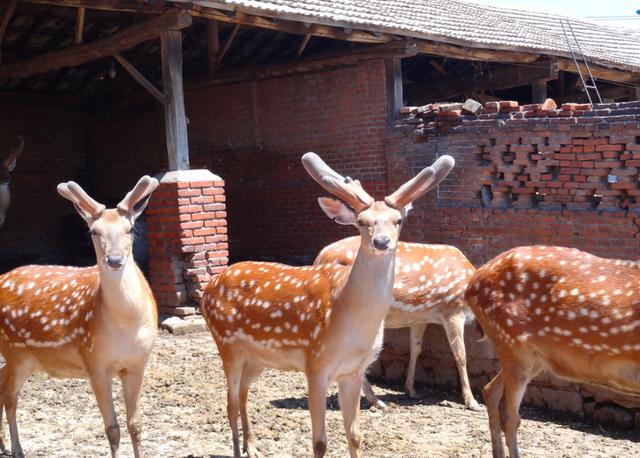How to prevent the swarm from fleeing? Bees must know that they will.
In the production of beekeeping, due to the influence of adverse factors in the colony, the phenomenon of partial colony escape may occur every year.
(1) the reason for the escape of the colony
1) genetic causes. Some bee species, such as Chinese bees, are easy to escape when the environment in the nest is very unsuitable for the colony. Some bee species, such as Italian bees, are reluctant to run away from their nests even when they are hungry, with the exception of small groups.
2) lack of stored honey. When there is a lack of honey sources in the field, the honey stored in the nest is gradually exhausted, the queen bee spawning decreases or stops completely, and even the bees stop feeding the larvae and throw them out of the nest. If there is no large amount of subsidized feeding, the bees are most likely to escape.
3) the disease and the enemy are serious. The occurrence of larval rot disease and cystic larval disease is serious. Ants, wax moth larvae, wasps and other enemies or robbers invade, and the colony is unable to resist Li's escape. The main reason for the escape of Chinese bees is the damage of nest insects. 4) the location of the nest box is not suitable. Bees are often fumigated near tall chimneys, or are exposed to direct sunlight in summer and the temperature in the nest is too high, or in the jungle, it is easy to escape when there is no sun or mold in the nest.
5) the group potential is too weak. There are few new sub-groups and mating-tail bees, and they do not have sufficient ability to adjust the temperature in the nest and the collection capacity is low. When the summer climate is very hot and food is scarce, these small groups are easy to escape.
6) the smell is irritating. When feeding the medicine, the medicine was so thick that it stimulated the bees.
7) strong vibration. If the action is too heavy during the inspection, the bees will be strongly shaken, or if they are often shaken near the railway or factory, they will flee.
(2) measures to prevent bee colonies from escaping
The main results are as follows: 1) improve feeding and management and eliminate the internal causes of fleeing bees. Timely division of bees in the bee-sharing season to prevent natural division of bees; choose places with sufficient honey sources to prevent lack of powder and break honey; timely extinguish nests and wasps to do a good job in disease prevention and treatment; prevent bees from being stimulated by smoke, stench and vibration; do not put beehives under high-voltage lines, hot sun or cold wind; feed vulnerable bees frequently, and frequently change old spleen, create new spleen, keep bee spleen in proportion, in order to enhance group potential and reduce weak colony. Clean the beehive regularly to keep it clean and hygienic to prevent the accumulation of dirt at the bottom of the hive. In short, it is necessary to strengthen the management of honey wheat to enhance the nesting of honeybees and reduce the possibility of low escape bees.
2) observe the colony frequently and find the coat sign of the colony in time. There are many signs of fleeing bees, which are not difficult to find as long as they are carefully observed, such as a significant decrease in worker bee attendance, guards and fans are almost stopped; the bee in the box is restless and honey storage is significantly reduced; the queen bee's eggs are reduced or stopped, and the abdomen is contracted, the king platform is covered, and the larvae are dry; the dirt at the bottom of the box is thick, the nest spleen is old and black, and the nest is bitten dilapidated; nest worms breed in large numbers, interspersed vertically and horizontally, and spun cocoons. If you find the above signs, immediately lower the nest door, lower the nest door board-three landing boards 4-4.3 cm, only worker bees are allowed in and out, so that the queen bee cannot pass through, and cut off the queen camel's wing on one side (but leave most of the leading edge of the wing vein). So that it can't fly. In this way, even if the worker bee escapes, but because the queen bee cannot move with him, the worker bee will generally return naturally.
- Prev

The sika deer bred in the rural areas of Northeast China is full of treasures and has high economic value.
Speaking of deer antler, one of the three treasures in Northeast China, I believe many friends know that the deer antler mentioned here is deer antler, which is a valuable Chinese herbal medicine...
- Next

Bees breeding you ask me to answer-how to divide bees artificially?
Artificial bee division refers to the extraction of honey powder spleen, son spleen and adult spleen to form a new colony. After artificial distribution of bees, to the main flow of honey.
Related
- On the eggshell is a badge full of pride. British Poultry Egg Market and Consumer observation
- British study: 72% of Britons are willing to buy native eggs raised by insects
- Guidelines for friendly egg production revised the increase of space in chicken sheds can not be forced to change feathers and lay eggs.
- Risk of delay in customs clearance Australia suspends lobster exports to China
- Pig semen-the Vector of virus Transmission (4)
- Pig semen-the Vector of virus Transmission (3)
- Five common causes of difficult control of classical swine fever in clinic and their countermeasures
- Foot-and-mouth disease is the most effective way to prevent it!
- PED is the number one killer of piglets and has to be guarded against in autumn and winter.
- What is "yellow fat pig"? Have you ever heard the pig collector talk about "yellow fat pig"?

